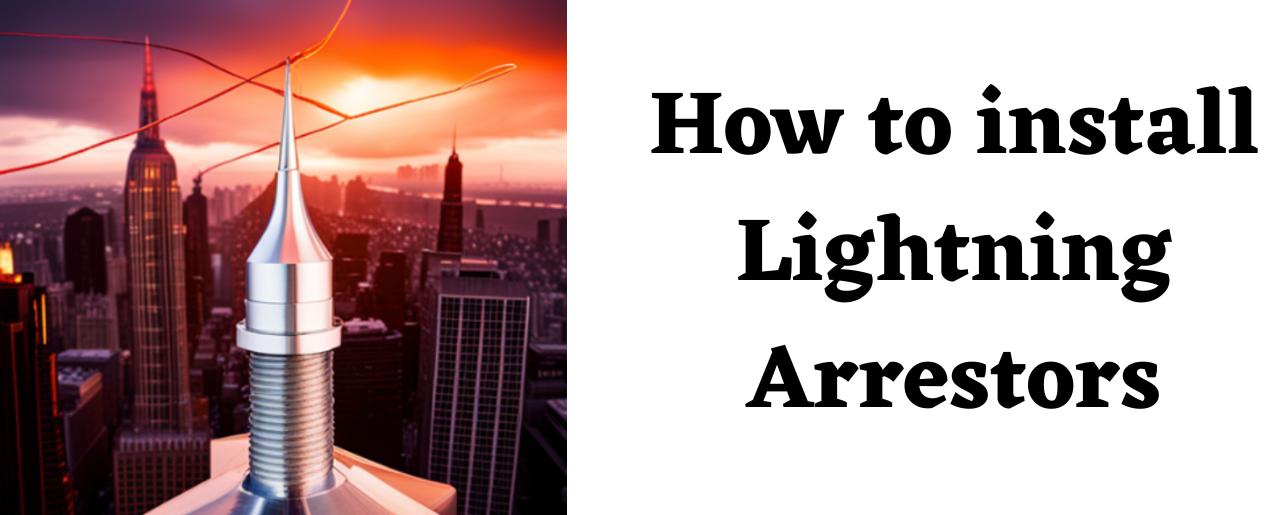How to install Lightning Arrestors
Lightning is a natural phenomenon that can cause significant damage to electronic equipment, buildings, and even people. Lightning arrestors are devices designed to protect against the effects of lightning strikes by providing a path for the electrical current to follow. In this blog, we will discuss the steps involved in installing a lightning arrestor.
Step 1: Select the Right Lightning Arrestor
Before you begin the installation process, you need to select the right type of lightning arrestor for your specific needs. There are different types of lightning arrestors available in the market, each with different features and specifications. You should consider factors such as the size of your building, the type of electrical system you have, and the level of protection you need.
Step 2: Choose a Suitable Location
The next step is to choose a suitable location for your lightning arrestor. Ideally, the lightning arrestor should be installed as close as possible to the electrical equipment you want to protect. It should also be installed in a location that is easily accessible for maintenance and inspection.
Step 3: Install Grounding System
Lightning arrestors work by providing a path of least resistance for the electrical current to follow. This means that the arrestor needs to be connected to a grounding system that can safely dissipate the electrical charge. To install the grounding system, you need to dig a hole and insert a grounding rod. The grounding rod should be at least 8 feet long and made of copper or galvanized steel.
Step 4: Mount the Lightning Arrestor
Once you have installed the grounding system, you can proceed to mount the lightning arrestor. The arrestor should be mounted on a non-conductive surface using a suitable bracket. You should also make sure that the arrestor is positioned in such a way that it is not exposed to direct sunlight, as this can cause damage to the device.
Step 5: Connect the Wiring
The final step is to connect the wiring between the electrical equipment and the lightning arrestor. The wiring should be connected in such a way that the electrical current will flow through the lightning arrestor in the event of a lightning strike. You should also make sure that the wiring is properly insulated to prevent any electrical shocks.
Conclusion
Lightning arrestors are essential devices for protecting electrical equipment and buildings from the damaging effects of lightning strikes. By following the steps outlined above, you can install a lightning arrestor in your home or business and enjoy peace of mind knowing that you are protected from this natural phenomenon. It is important to remember that installation of a lightning arrestor requires careful planning and should only be carried out by a qualified professional.

